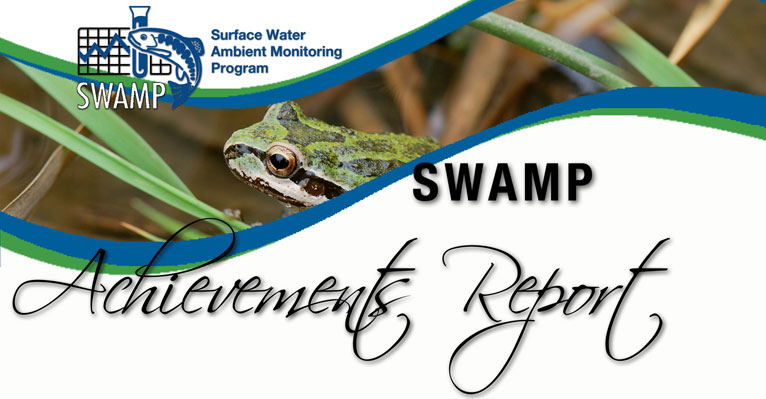SWAMP Achievements Report - Monitoring Projects
SWAMP Achevements Quick Links
The Statewide and Regional monitoring programs are collaborative efforts receiving funding support from SWAMP as well as one or more of our valued partners. Monitoring activities focus on providing critical information on a wide variety of water quality concerns throughout the state. Many of the monitoring efforts span multiple years.
Years
2015
January 1, 2015 - December 31, 2015 Site Visits and Collections Conducted
- In 2015, the State and Regional Water Boards made 3,105 Site Visits to take measurements and samples, resulting in 9,262 Collections Conducted (summarized in pie charts below).. Each regional and statewide SWAMP program strategizes which group of parameters to sample for at each sampling site in order to answer specific monitoring questions. Differences in the number of Site Visits and the number of Collections Conducted.
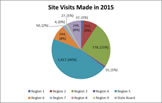 Click to enlarge
Click to enlargeFigure 1. This pie chart shows the total number of sites visited in 2015 by each of the Regional Water Boards and Statewide monitoring programs.
 Click to enlarge
Click to enlargeFigure 2. This pie chart shows the total number of collections conducted in 2015 by category.
Statewide Efforts
- Perennial Streams Assessment (Bioassessment Monitoring Program) - The Perennial Streams Assessment (PSA) is an ongoing, long-term statewide survey of the ecological condition of wadeable perennial streams and rivers throughout California. The PSA collects samples for biological indicators (benthic macro invertebrates [BMIs] and algae) and chemical constituents (nutrients, major ions, etc.) and also conducts habitat assessments for both in-stream and riparian corridor conditions. A key to the success of SWAMP's PSA is the role it has played in standardizing, linking and supporting numerous independent programs conducting probability surveys in California. Partners include the USEPA's National Rivers and Streams Assessment, Southern California Stormwater Monitoring Coalition, S.F. Bay Regional Monitoring Program, the Tahoe Regional Planning Agency, the Bureau of Land Management, and the U.S. Forest Service. Such partnerships help create a statistically robust, yet cost-effective and efficient approach to answering important water quality monitoring questions.
- Reference Condition Management Program (Bioassessment Monitoring Program) - The Reference Condition Management Program (RCMP) is California’s program for establishing and maintaining a network of reference sites for wadeable streams and rivers throughout California. This network is vital to the establishment of reference conditions, which define the biological conditions expected in healthy streams when human activity in the environment is absent or minimal. The RCMP plays a central role in developing assessment thresholds for biotic integrity and in establishing a biological integrity implementation plan, and is supplemented by reference programs of several partner agencies, such as the U.S. Forest Service, the Tahoe Regional Planning Agency, and the USEPA.
- U.S. Forest Service Management Indicator Species Monitoring Program - The SWAMP Bioassessment Program is collaborating with the U.S. Forest Service Management Indicator Species Program and the Sierra Forest Management Indicators Project to produce a more comprehensive assessment of forested areas in northern California. The U.S. Forest Service is adopting SWAMP bioassessment monitoring protocols.
- Additional Species Toxicity Test - In 2015, the Stream Pollution Trends Monitoring Program (SPoT) began conducting an additional toxicity test using Chironomus dilutus to assess toxicity from fipronil at urban sites. By using this test, toxicity was identified in five sites where testing with Hyalella azteca did not, due to species sensitivity to different contaminant classes. More information about testing ambient samples with different species is available in a SWAMP technical memo.
- Evaluating the Effectiveness of Pyrethroid Use Restrictions in Urban Areas - The Stream Pollution Trends Monitoring Program (SPoT) is collaborating with the California Department of Pesticide Regulation (CDPR) to evaluate the effectiveness of new restrictions on the use of pyrethroid pesticides in urban applications. Four intensive monitoring sites are jointly sampled by SPoT and CDPR to determine whether new regulations result in reduced pyrethroid concentrations and associated effects. These sites are also monitored for fipronil.
- The SWAMP Bioaccumulation Monitoring Program's Statewide Survey Finds Fish-Eating Birds at Risk from Mercury in Many Lakes - SWAMP has released findings from the first statewide survey of contaminants in wildlife from California waters. The findings are summarized in a fact sheet, technical report, Estimating Exposure of Piscivorous Birds and Sport Fish to Mercury in California Lakes Using Prey Fish Monitoring - A Predictive Tool for Managers, The study:
- Evaluated mercury risk to wildlife (fish-eating birds) in a representative sample of California lakes,
- Documented correlations between concentrations of mercury in birds and fish and developed a spreadsheet tool that can be used to estimate risk to birds in lakes where fish data are available, and
- Established methods for monitoring birds and fish in lakes to estimate mercury risk to wildlife.
- SWAMP Establishes Long-Term Monitoring Plan for Mercury in Lakes - In 2015 the Bioaccumulation Monitoring Program established and began implementing a plan for sampling and analysis of sport fish in a long-term program to track status and trends in concentrations of mercury and other contaminants in the many California lakes where bass species are present. Bass species (including largemouth, smallmouth, and others) are at the top of the food chain and consequently tend to accumulate high concentrations of mercury. Past SWAMP sampling showed that many lakes have mercury concentrations in bass that are above thresholds for concern. The plan calls for sampling 190 bass lakes throughout the state on a 10-year cycle. The sampling is being done in five rounds with 38 lakes in each round and the rounds occurring every other year. This plan will address the critical need of managers and the public for updated, high-quality information on the status of contaminant bioaccumulation in these important water bodies. The plan is designed in a way that will also allow tracking of statewide and regional trends in mercury contamination of lake food webs as they respond to factors such as increasing global atmospheric emissions and climate change. Understanding these background trends is critically important in evaluating the effectiveness of statewide and regional mercury control plans, such as the Statewide Mercury Program.
Regional Efforts
- Regional Monitoring Coalition (RMC) for the San Francisco Bay Region (San Francisco Bay Region) - The Bay Area Stormwater Management Agencies Association (BASMAA) Regional Monitoring Coalition completed their fourth year of monitoring in 2015. SWAMP sampled 8 non-urban sites to support this effort. The addition of these samples will provide valuable perspective for the urban data collected by the stormwater programs. The fourth annual report based on the data collected in 2015 will be available at the SF Bay SWAMP website.
- Long-Term Trend Monitoring (San Francisco Bay Region) - In 2015 the San Francisco Bay regional SWAMP team continued their ongoing sampling of six targeted reference sites distributed across the region. The purpose of this study is to examine long-term trends and seasonal variability on the health of minimally-disturbed sites, to provide insight on the best attainable conditions for the region, and help to develop regional and statewide biological objectives. Results from this on-going study will also be used to monitor the long-term effects of climate change, as well as regional and local factors, on stream health. In 2008-2010 and 2015, our team sampled biotic communities (benthic macroinvertebrates and algae) and water chemistry in three perennial (i.e., flow year-round) and three non-perennial (i.e., seasonally go dry) reference streams. Results from the 2008-2010 Reference Study can be found on the SF Bay SWAMP website .
- Coastal Confluences Monitoring (Central Coast Region) - In 2015, the Central Coast Ambient Monitoring Program completed its 17th year of status and trend monitoring of the Central Coast Region’s surface waters. Long-term trend data is collected monthly at stations placed in the lower reaches of 33 coastal watersheds (Coastal Confluences). These stations have been monitored monthly since January 2001 for several parameters. Each month, staff collects measurements onsite for flow, pH, oxygen, water temperature, turbidity, and salinity and collects samples for lab analysis of nutrients, salts, metals, fecal indicator bacteria, and dissolved and suspended solids. Toxicity data is collected less frequently at a subset of sites. In most years, bioassessment data is also collected, but contracting delays prevented this in 2015. An example of trend data from one of our Coastal Confluence stations is shown in Figure 1.
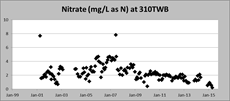 Click to enlarge
Click to enlarge
Figure 1. Nitrate data from the Coastal Confluence station on Chorro Creek (310TWB) showing a reduction in nitrate concentrations in the creek following the 2008 upgrade to the upstream waste water treatment facility's discharge treatment.
- Completion of the Central Coast Ambient Monitoring Program's Fifth Watershed Rotation (Central Coast Region) - In 2015, CCAMP completed its third rotation through five watershed rotation areas. In each watershed rotation area, approximately 30 stations are monitored monthly for one year. Stations are selected along the main stem and at major tributary inputs. This tributary-based design is intended to aid in efficient identification of the general source areas of pollutant problems. Each month, staff collects measurements onsite for flow, pH, oxygen, water temperature, turbidity, and salinity and collects samples for lab analysis of nutrients, salts, metals, fecal indicator bacteria, and dissolved and suspended solids. Some sites are also monitored for toxicity. In most years, bioassessment data is also collected, but contracting delays prevented this in 2015. Figure 2 shows an example of data showing change at one of our watershed rotation area stations.
 Click to enlarge
Click to enlarge
Figure 2. Nitrate data from the watershed rotation area station on Orcutt Creek (312ORC) showing an increase in nitrate concentrations between the 2000 monitoring year and the 2007 and 2013 monitoring years.
- Central Coast Ambient Monitoring Program Detects Load Reductions (Central Coast Region) - Reduced flows and associated pollutant loads have been documented at a number of stations monitored by CCAMP and the Central Coast Cooperative Monitoring Program for Agriculture. Flow, also known as discharge, was added to the suite of onsite measures at most sites in 2005 and is measured monthly. Reduced flows may be primarily attributed to drought conditions over the past few years. However, in waters dominated by return flows from irrigated agriculture, these may indicate successful irrigation management practices. In 2015, the CCAMP website was updated to show instantaneous load (measured flows and pollutant concentrations are used to calculate pollutant mass in kilograms per day) as shown in Figure 3.
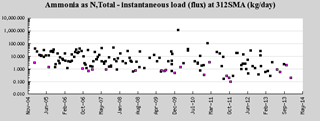 Click to enlarge
Click to enlarge
Figure 3. Ammonia loads (Kg of ammonia per day) at the lower Santa Maria River station (312SMA). Pink squares indicate the ammonia result was a non-detect value.
- Non-Perennial Streams Monitoring in the San Diego and Colorado River Basin Regions - Non-perennial streams range from ephemeral washes and headwaters that flow for only a few hours after rain events to streams with sustained flows lasting nearly all year Although these streams function differently from perennial streams, they also provide essential ecosystem services. These ecosystem services include watershed and landscape hydrologic connections, water supply protection and water-quality filtering, wildlife habitat and movement/migration corridors; sediment transport, storage and deposition; groundwater recharge and discharge, vegetative community support, and nutrient cycling and movement. This project's bioassessment tools (algal and Benthic Macroinvertebrate (BMI) indices) serve a subset of non-perennial streams that contain flow for sufficient duration to allow the establishment and support of in-stream benthic communities. Read the Extent, Hydrology and Ecology of Non-Perennial Streams in the San Diego Region monitoring plan on the SWAMP website.
- Central Coast Ambient Monitoring Program Produces Results (Central Coast Region) - In 2015, CCAMP delivered over 15,000 data results (including both field measurement and grab sample chemistry results) to the SWAMP database. (Data for the 4th quarter of 2015 are still being delivered.) This year, CCAMP staff visited 63 stations each month and collected data for 35 different parameters at every station that had flowing water present. In addition, CCAMP conducted two toxicity events at each of nine stations, deployed continuous temperature probes at 23 stations (logging every 15 minutes from approximately May 2015 - October 2015), and deployed continuous oxygen, temperature, and pH probes at 19 stations (logging every 30 minutes for 7 -10 days during summer months). Although 2015 was a record drought year, the CCAMP program succeeded in collecting high quality data at many of its routine stations.
- Safe to Swim (Central Valley Region) - In 2015, SWAMP field crews monitored bacteria levels in eight watersheds to assess recreation safety. The watersheds include a mix of areas without previous monitoring data and areas with a history of elevated bacteria levels. The Central Valley SWAMP has collected nine years of data through a series of Safe to Swim studies. More information is available on the Central Valley SWAMP website.
- Tulare Lake Basin Rotational Watershed Monitoring (Central Valley Region) - SWAMP field crews in the Central Valley Region’s Fresno Office initiated monitoring in the Tule River watershed, the third watershed in the Tulare Lake Basin Rotational Watershed Monitoring program. Nine sites will be monitored for a one year period. Water quality sampling includes nutrients, minerals, bacteria, metals, and surfactants. The Tule watershed is the third of four watersheds in the Tulare Lake Basin that will be monitoring under the rotational monitoring program.
- Lower San Joaquin Toxicity Monitoring (Central Valley Region) - SWAMP field crews collected samples at nine sites in the lower San Joaquin River watershed to be analyzed for chronic water column toxicity. Toxicity testing is used to indicate if pollutants are impacting the health of aquatic organisms. Data will be used to help reassess the many listings for impairment due to unknown toxicity in the San Joaquin watershed.
- Monitoring to Evaluate Site Specific Objectives for Water Bodies (Lahontan Region) - SWAMP staff is working with Basin Planning/TMDL staff to evaluate current site specific objectives to determine whether they are protective of the beneficial uses of water bodies listed as impaired. These efforts are implementing the Prioritization of the Lahontan Region 303(d) List Guidance document approved by the Lahontan Board in July 2015.
- Bacteria Monitoring for Microbial Source Tracking Analysis (Lahontan Region) - SWAMP field crews are collecting water samples for fecal coliform, E. coli, and microbial source tracking analysis to support a TMDL discretionary contract with UC Santa Barbara Sierra Nevada Aquatic Research Laboratory. SWAMP field crews collected water samples at targeted watersheds where bacteria is at elevated levels and exceeds both the Basin Plan objective and the USEPA criteria. This effort will provide information to determine source(s) of contamination to inform subsequent management actions.
- Lahontan Region Trend Monitoring (Lahontan Region) - SWAMP field crews collect quarterly samples in all the major watersheds in the Lahontan region, spanning the eastern Sierra Nevada mountain range from the Oregon border to the Mojave Desert. This data is crucial as there is very little data collected and evaluated in the Lahontan Region due to few permitted dischargers. The data collected through the SWAMP program: (1) provides long-term data sets to evaluate trends; (2) identifies shifts in the status of water quality; and (3) provides the bulk of data evaluated for the Clean Water Act Sections 305(b) and 303(d) Integrated Report.
2014
Statewide Efforts
- Survey of Lakes and Reservoirs with Low Concentrations of Contaminants in Sport Fishing – A one-year follow up study to conclusively identify lakes and reservoirs with relatively low levels of contamination.
- Stream Pollution Trends (SPoT) Monitoring Program – SPoT monitors 100 watershed sites annually to develop the tools necessary for understanding the long term links between land management practices and water quality. SPoT released a report in 2014 summarizing the program’s initial five years of data and emerging trends.
Regional Efforts
- SWAMP Cyanobacteria Harmful Algal Bloom (CyanoHAB) Program (Multi-Regional Project; San Francisco Bay Region, Central Coast Region and San Diego Region) – SWAMP’s new CyanoHAB program is part of a statewide initiative to develop in-depth monitoring of cyanobacteria blooms and cyanotoxins. This program utilizes satellite imagery, lab data databases and a website with the imagery and lab data, as well as incident reports and bloom information. This program will help ensure that the public is protected and informed.
- Regional Monitoring Coalition (RMC) (San Francisco Bay Region) – The Bay Area Stormwater Management Agencies Association (BASMAA) Regional Monitoring Coalition (Coalition) completed their third year of monitoring in 2014. SWAMP sampled 10 non-urban sites to support this effort. The addition of these samples will provide a valuable perspective for the urban data collected by the stormwater programs. The third annual report based on data collected in 2014 will be available at the SF Bay SWAMP website.
- Ambient Monitoring of Depressional Wetlands (San Francisco Bay Region) – SWAMP field crews sampled 30 freshwater depressional wetlands in 2014 using a probabilistic sample design to determine the current physical, chemical, and biological condition of these under-studied habitats. The sampling methodology utilized in this study was recently published as a SWAMP standard operating procedure. Field crews collected water chemistry samples for nutrients, algae concentrations, harmful algae toxins, and heavy metals in sediment. Biological sampling included diatom (algae) taxonomy and macroinvertebrate taxonomy. Physical conditions were assessed using the California Rapid Assessment Method. A final report for this work is expected by spring 2016.
- 2014 Central Coast Ambient Monitoring Program (Central Coast Region) – This program gathers monthly samples at the five Central Coast watersheds and assesses one each year over a five year cycle. The program monitors a variety of metrics to assess water quality and safety for drinking, swimming, fishing, agriculture, and overall health of the existing natural habitats.
- Sacramento Watershed Coordinated Monitoring Program (Central Valley Region) – SWAMP collaborated with the California Department of Water Resources, Northern Region to complete the sixth year of quarterly trend monitoring in the Sacramento River watershed. In November 2014, twelve new sites were added to the program, for a total of 56 monitoring sites.
- Tulare Lake Basin Rotational Watershed Monitoring (Central Valley Region) – In 2014, SWAMP initiated water quality monitoring in the Kaweah River Watershed, the second of four watersheds in the rotational monitoring program.
- Seasonal Monitoring at Central Valley Integrator Sites (Central Valley Region) – SWAMP completed the fifth year of water quality monitoring at sites throughout the Central Valley.
- Bioassessment Monitoring in the (Santa Ana Region) – The Santa Ana Regional Stream Bioassessment Monitoring Program is a SWAMP-funded ambient monitoring program that was initiated in 2006 to assess the ambient condition of wadeable streams. For six years (2006-2011), the biological (benthic macroinvertebrates), physical (in-stream habitat, surrounding riparian habitats), and chemical attributes at 181 sites within the Santa Ana Region have been sampled using a probabilistic sampling design. A multiyear report analyzing the data collected from 2006-2011 is in review and once available will be posted on the region-specific SWAMP website. Beginning in 2012, the program started to revisit probabilistic sites of interest to estimate changes in the condition of streams. In 2013, algae taxonomy (i.e., diatoms and soft algae) was added to the monitoring design. A report summarizing the results of the 2012-2013 data is in review and once available will be posted on the region-specific SWAMP website.
- The Stormwater Monitoring Coalition (SMC) (Santa Ana Region) – The SMC stream survey is a collaborative effort of stormwater and regulatory agencies in southern California and is designed to provide data about the condition of southern California’s coastal streams. In addition, the SMC monitoring program serves as the southern California component of SWAMP’s Perennial Stream Assessment (PSA) to assess stream conditions statewide. The Los Angeles, Santa Ana, and San Diego Regional Boards participate in the survey using SWAMP funds. A final report on the results from the first five years of the SMC stream survey is available. A major finding was that perennial streams only comprise approximately 25% of total stream length in the southern California region. Starting in 2015, the SMC stream survey will be expanded to include long-lasting non-perennial streams to address this assessment gap.
- 2014 Cyanobacteria Blooms in the San Diego Region (San Diego Region) – The San Diego Regional Water Board conducted a 2014 sampling program to screen for cyanobacteria and cyanotixins. This study will support future threat assessments of cyanobacteria blooms and increases in cyanotoxin levels.
- Quantification of Debris in San Diego Bay (San Diego Region) – This is a special study to the Bight 2013 debris study. The study will develop a baseline assessment of the bay habitats in an effort to identify type, location, and quantity of the most harmful plastics and debris generated from land based sources.
2013
Statewide Efforts
- Survey of Contaminants in Sport Fish in California Rivers and Streams - SWAMP released findings from the first-ever statewide survey of contaminants in sport fish from California rivers and streams. The survey, conducted in 2011, analyzed 16 fish species from 63 locations for multiple contaminants, including methylmercury and PCBs.
- Survey of Mercury Exposure and Risk in Wildlife in CA Lakes & Reservoirs - A two-year study to collect data on mercury concentrations in grebes and fish in 24 California lakes and reservoirs. The data will be used to develop a tool to translate observed mercury concentrations in fish into estimated mercury concentrations in birds.
Regional Efforts
- SWAMP Lakes Study Follow-up Monitoring - (Multi-Regional Project: San Francisco Bay, Central Coast, Los Angeles, and Lahontan Regions) Multiple Regional Water Boards collected and analyzed additional fish tissue samples in follow-up to the 2007-08 SWAMP Lakes Study. The Office of Environmental Health Hazard Assessment (OEHHA) will use this data and data from the original study to develop Safe Eating Guidelines for specific lakes and reservoirs where fish are contaminated.
- Regional Monitoring Coalition (RMC) (San Francisco Bay Region) - The Bay Area Stormwater Management Agencies Association (BASMAA) Regional Monitoring Coalition (Coalition) completed their second year of monitoring in 2013. SWAMP sampled 18 non-urban sites to support this effort. The addition of these samples will provide a valuable perspective for the urban data collected by the stormwater programs. The second annual report based on data collected in 2013 will be available at the SF Bay SWAMP website. Data from 2013 have been submitted to CEDEN and will be posted after review.
- 2013 CCAMP Activities (Central Coast Region) - The Central Coast Ambient Monitoring Program rotates monitoring activities among the five major watersheds in the Central Coast Region, conducting monitoring in one watershed each year. In 2013, the program covered an area that included the Santa Maria River and Carrizo Plains Hydraulic Units and coastal confluence sites in Santa Cruz, Monterey, San Luis Obispo, and Santa Barbara Counties.
- Los Angeles River Watershed Monitoring Program (LARWMP) (Los Angeles Region) - SWAMP and local stakeholders attended a symposium in October of 2013 to review the results of the LARWMP from the past five years and to discuss the current and future states of the Los Angeles River Watershed.
- Colorado River Basin Region’s Perennial and Intermittent Streams Bioassessment Study (Colorado River Basin Region) - A two-year bioassessment monitoring study to characterize and track the chemical and biological health of 17 targeted perennial and intermittent streams in the Colorado River Basin Region for the first time.
- Bioassessment Monitoring in the Santa Ana Region (Santa Ana Region) - Ongoing bioassessment monitoring of wadeable streams in the Santa Ana Region to assess overall stream health, to identify waters where biological condition is impaired, and to develop actions to improve water quality in impaired streams.
- Evaluation of the Effectiveness and Success of the Forester Creek Improvement Project - Post-project monitoring in Santee, California to evaluate if the Forester Creek Improvement Project, conducted in 2006, was successful in achieving its restoration goals.
2012
Statewide Efforts
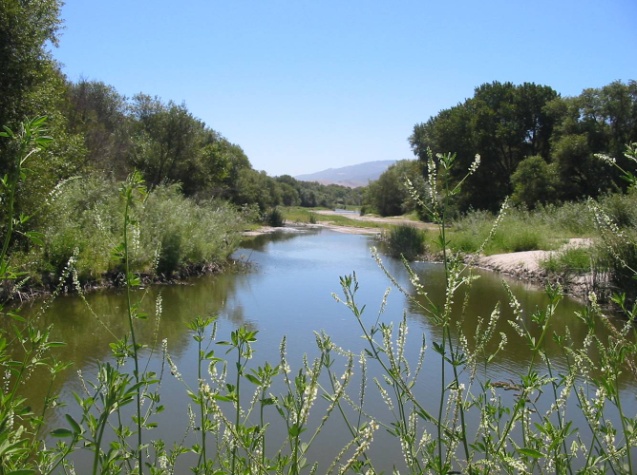
- Stream Pollution Trends (SPoT) Monitoring Program - In 2012, SPoT continued long-term trend monitoring at 100 established "integrator" sites. The 2008 SPoT Report and Fact Sheet are available on the SWAMP website. The 2009/2010 SPoT report will be available on the SWAMP website in 2013.
- Survey of Mercury Exposure and Risk in Wildlife in CA Lakes & Reservoirs -
A two-year study to collect data on mercury concentrations in grebes and fish in 24 California lakes and reservoirs. The data will be used to develop a tool to translate observed mercury concentrations in fish into estimated mercury concentrations in birds.
Regional Efforts
- Freshwater Beaches Monitoring Program (North Coast Region) - An ongoing monitoring program that measures bacteria concentrations in local freshwater beaches. This program was expanded in 2012 to include recreational beaches in the South Fork Eel watershed.
- The Garcia River TMDL Implementation and Bioassessment Monitoring Program entered its fifth year of operation in 2012. The North Coast Region, in coordination with The Nature Conservancy, monitored all previously evaluated stream reaches in the watershed. Monitoring conducted in 2012 assessed water quality and stream habitat changes in both individual subwatersheds and the watershed as a whole.
- North Coast Trend Monitoring (North Coast Region) - An ongoing rotational monitoring program conducted to determine whether water quality is improving in the Region, and whether beneficial use designations are being met. In 2012, the program monitored the Coastal River watersheds.
- Napa River and Sonoma Creek Nutrient and Algae Study (San Francisco Bay Region) - A two-year study examining nutrient, algae, and dissolved oxygen levels in the Napa River and Sonoma Creek watersheds.
- Regional Monitoring Coalition (RMC) (San Francisco Bay Region) - The Bay Area Stormwater Management Agencies Association (BASMAA) Regional Monitoring Coalition (Coalition) completed their first year of monitoring in 2012. The Coalition monitoring plan will answer the questions: Are water quality objectives, both numeric and narrative, being met in local receiving waters, including creeks, rivers and tributaries? Are conditions in local receiving waters supportive of or likely to be supportive of beneficial uses? The first annual report based on data collected in 2012 will be available at the SF Bay SWAMP website.
- CCAMP Activities (Central Coast Region) - The Central Coast Ambient Monitoring Program rotates monitoring activities among the five major watersheds in the Central Coast Region, conducting monitoring in one watershed each year. In 2012, the program covered an area that included the Salinas River and Estrella River Hydrologic Units.
- Lakes Study Follow-up Monitoring (Central Coast Region) - Follow-up monitoring to a study conducted in 2007-2008 that found high levels of contaminants in fish tissue samples from Central Coast lakes.
- Malibu Creek Regional Monitoring Program (MCRMP) (Los Angeles Region) - A regional monitoring program to assess the condition of the Malibu Creek Watershed and address multiple beneficial use questions.
- Bioassessment Monitoring in the Santa Ana Region (Santa Ana Region) - Continued ongoing bioassessment monitoring of wadeable streams in the Santa Ana Region to assess overall stream health, to identify waters where biological integrity is impaired, and to develop actions to improve water quality in impaired streams.
- Cyanotoxin Screening Study in Different Water Bodies of the San Diego Region (San Diego Region) - A study designed to identify the extent of cyanotoxins in water bodies in the San Diego Region and to characterize the impact on beneficial uses of waters. In 2012, the program monitored streams and depressional wetlands. The program will monitor coastal estuaries, reservoirs, and lakes in 2013.
- Municipal Non-Stormwater Nutrients Study (San Diego Region) - In 2012, the San Diego Regional Water Board trained staff to conduct inspections of non-stormwater discharges from storm drains. The study identified several non-stormwater discharges that exceeded nutrient pollution objectives and identified the potential sources of this impairment.
- Stormwater Monitoring Coalition (SMC) (Los Angeles, Santa Ana, and San Diego Regions) - The SMC is a collaborative effort between 14 regulated, regulatory, and research entities located in southern California. The SMC designed a study for the first comprehensive assessment of the health of streams in southern California. Sampling for this study started in 2009 and is ongoing. SWAMP staff in the Los Angeles, Santa Ana and San Diego Regions support the efforts of the SMC.
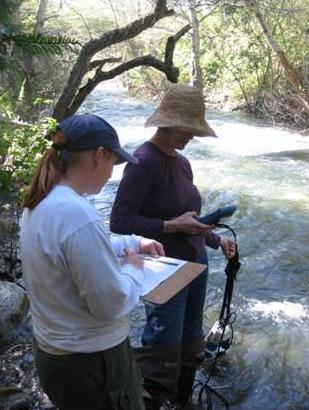
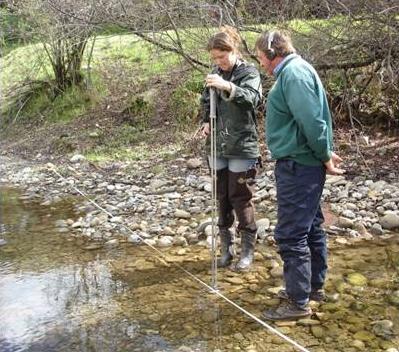
2011
Statewide Efforts
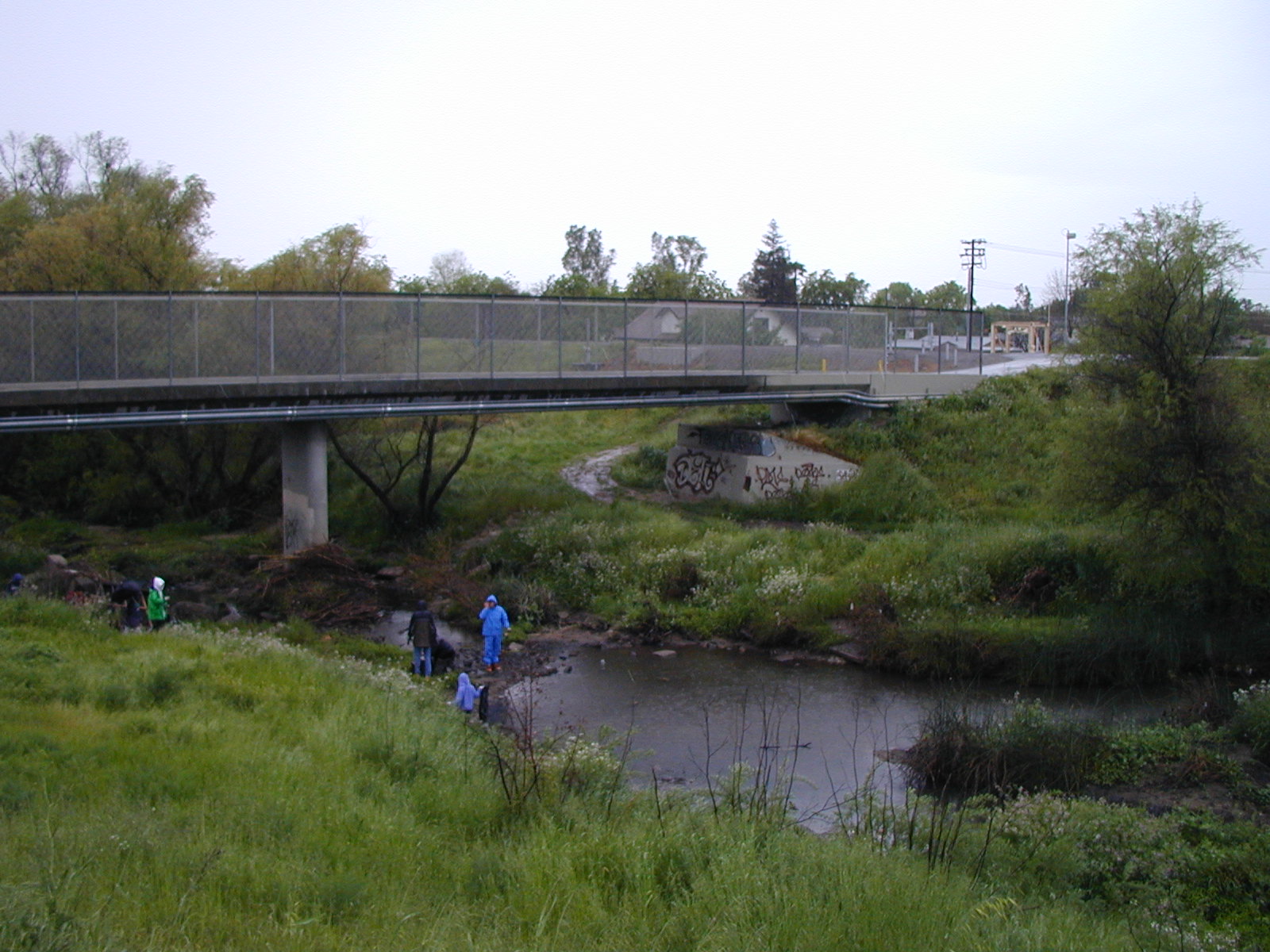
- Stream Pollution Trends (SPoT) Monitoring Program - A statewide monitoring program to assess the health of California streams by analyzing sediment contaminants, toxicity, and the correlations with local land use in streams draining large watersheds.
- Algae as a Second Indicator of Ecosystem Health - A SWAMP effort to develop and incorporate algae, as habitat and riverine wetland indicators, into assessments of the ecological health of California’s rivers and streams.
Regional Efforts
- The Russian River Nutrient Study (North Coast Region) - A study designed to improve understanding of the yearly algal blooms along the Russian River.
- The Russian River Beaches Monitoring (North Coast Region) - This program collects and reports bacteria data from freshwater river beaches, addressing both human and environmental health concerns.
- Garcia River TMDL Implementation (North Coast Region) - These studies explore the value and importance of this forested watershed, while striving to improve instream conditions for salmon and steelhead. In 2011, the North Coast Region and The Nature Conservancy monitored eight stream reaches in the basin in an ongoing effort to document seasonal variation in the watershed.
- North Coast Trend Monitoring (North Coast Region) - Monitoring conducted in a number of large watersheds with the intent to shed light on whether overall water quality conditions are improving in these critical forested drainages.
- Suisun Bay Study (2011-2012) (San Francisco Bay Region) - A more intensive follow-up to a study conducted in 2010 measuring phytoplankton growth and nutrient uptake rates in Suisun Bay. Current work focuses on identifying potential growth inhibitors to phytoplankton.
- CCAMP Continuous Monitoring (Central Coast Region) - The continuous monitoring element of the Central Coast Ambient Monitoring Program identifies streams where dissolved oxygen and temperature conditions are outside tolerance ranges for resident fish. This monitoring also allows better characterization of stream temperature and dissolved oxygen concentrations, which fluctuate daily and seasonally.
- CCAMP Activities (Central Coast Region) - The Central Coast Ambient Monitoring Program rotates monitoring efforts among the five major watersheds in the Central Coast Region, conducting monitoring in one watershed each year.
- Solid Phase Adsorption Toxin Tracking (SPATT) Monitoring for Microcystin (Central Coast Region) - SPATT is an initial screening study to determine the extent to which microcystins (toxins produced by blue-green algae) are present in the Central Coast Region’s coastal watersheds.
- San Gabriel River State of the Watershed Report (Los Angeles Region) - The San Gabriel River Watershed Program recently released a State of the Watershed report based on five years of monitoring data (2005-2011). The report assesses the ecological condition of streams in the watershed, whether it is safe to swim, and whether locally caught fish are safe to eat.
- Santa Clara River Watershed Program (Los Angeles Region) - A regional, collaborative monitoring program to measure water quality, toxicity, and biological and habitat condition in the Santa Clara River watershed. The objectives of this program are to increase awareness of the importance of issues at the watershed scale. The program also improves coordination and integration of monitoring efforts for both compliance and to assess ambient stream conditions.
- Pyrethroid Study Cache Slough (Central Valley Region) - This study is designed to investigate the principal routes by which pyrethroids are entering the Cache Slough complex during the February to June period when the habitat is used by spawning Delta smelt.
- Harmful Cyanobacteria in Clear Lake and the Delta (Central Valley Region) - This study is designed to identify and characterize the presence of harmful cyanobacteria and their toxins in two large and complex California waterbodies known to experience cyanobacteria blooms: Clear Lake and the Sacramento-San Joaquin Delta.
- Vernal Pool Monitoring (Central Valley Region) - The purpose of the study is to collect data on water quality and physical pool characteristics to assess the health of vernal pools. This monitoring is located in the vernal pools of the alkali sink habitat (seasonally flooded areas with saline soils that support plants adapted to survive in these conditions) of the California Department of Fish and Wildlife Ecological Reserves.
- Seasonal Trend Monitoring at Central Valley Integrator Sites (Central Valley Region) - Completed the third year of sampling for seasonal trend monitoring at Central Valley integrator sites.
- Sacramento Watershed Coordinated Monitoring Program (Central Valley Region) - Completed the third year of sampling for the SWCMP.
- Safe to Swim Monitoring Program (Central Valley Region) - Completed the fifth year of Safe to Swim Monitoring with an expanded sampling design to monitor swimming holes throughout the summer recreation season.
- Grasslands Bypass Project (Central Valley Region) - Concluded sampling in June 2011 after sixteen years of coordination with other agencies and programs.
- Pesticide Study (Colorado River Region) - This study looks at legacy pesticide concentrations in both water and fish tissues along agricultural drains and rivers that flow into the Salton Sea.
- Bioassessment Monitoring in the Santa Ana Region (Santa Ana Region) - Continued ongoing bioassessment monitoring of wadeable streams in the Santa Ana Region to assess overall stream health, identify waters where biological integrity is impaired, and develop actions to improve water quality in impaired streams.
- Contaminants of Emerging Concern (San Diego Region) - In the past several years, the San Diego Water Board conducted pilot studies on several different Contaminants of Emerging Concern (CECs). In 2009, the San Diego Water Board carried out a study on polybrominated diphenyl ethers (PBDEs) that are used in flame retardants. In 2010/11, pharmaceuticals and personal care products (PPCPs) were sampled in surface waters throughout the San Diego Region. The San Diego Water Board is focusing on cyanobacteria and microcystin in 2012.
- Freshwater Wetlands in Southern California (Los Angeles, Santa Ana and San Diego Regions) - This study assesses the condition and stressors associated with the beneficial uses of southern California depressional wetlands.
- Stormwater Monitoring Coalition (SMC) (Los Angeles, Santa Ana and San Diego Regions) - The SMC is a collaborative effort between 14 regulated, regulatory, and research entities located in southern California. The SMC designed a study for the first comprehensive assessment of the health of streams in southern California. Sampling for this study started in 2009 and is ongoing.
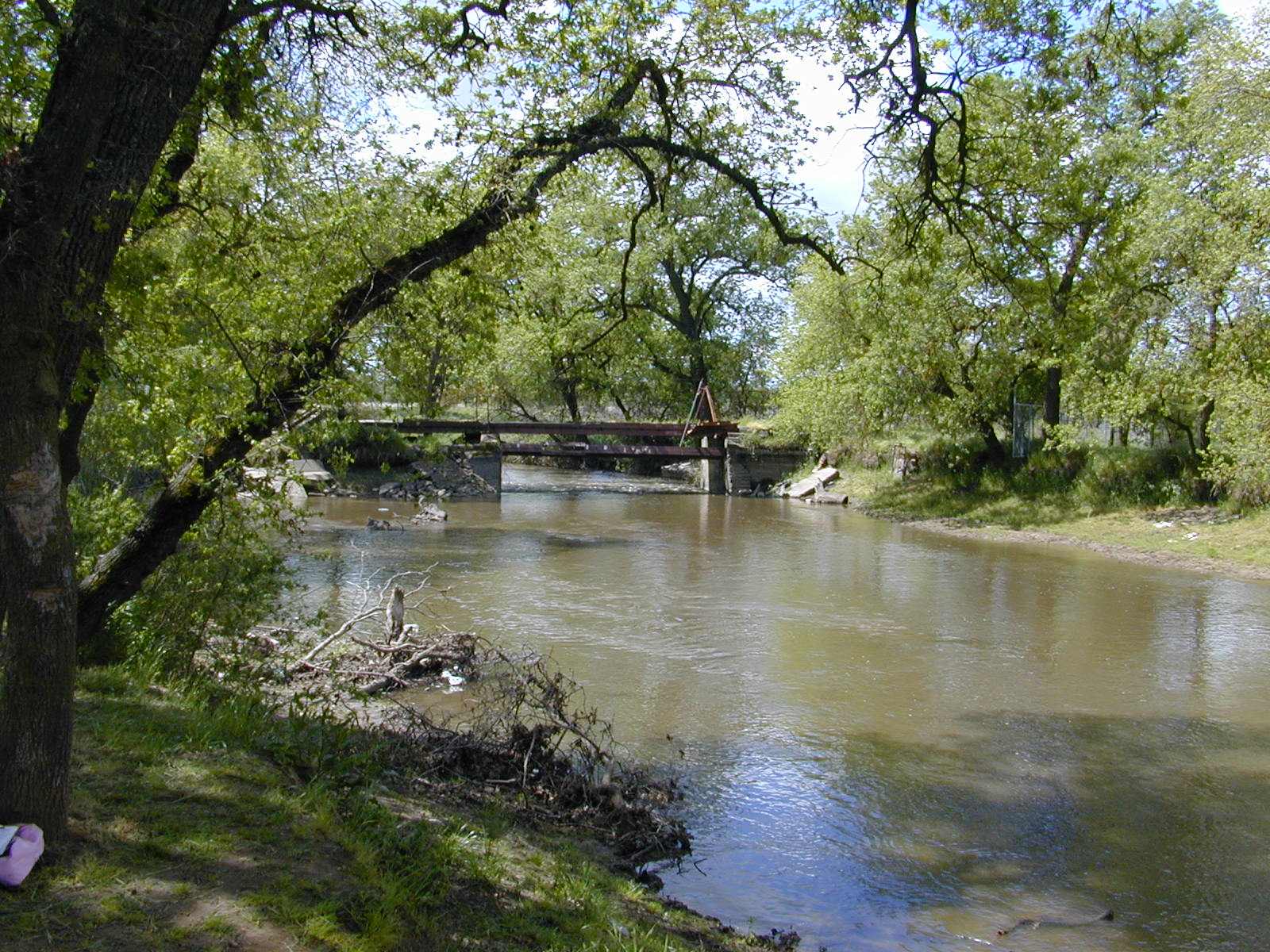
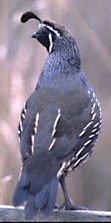
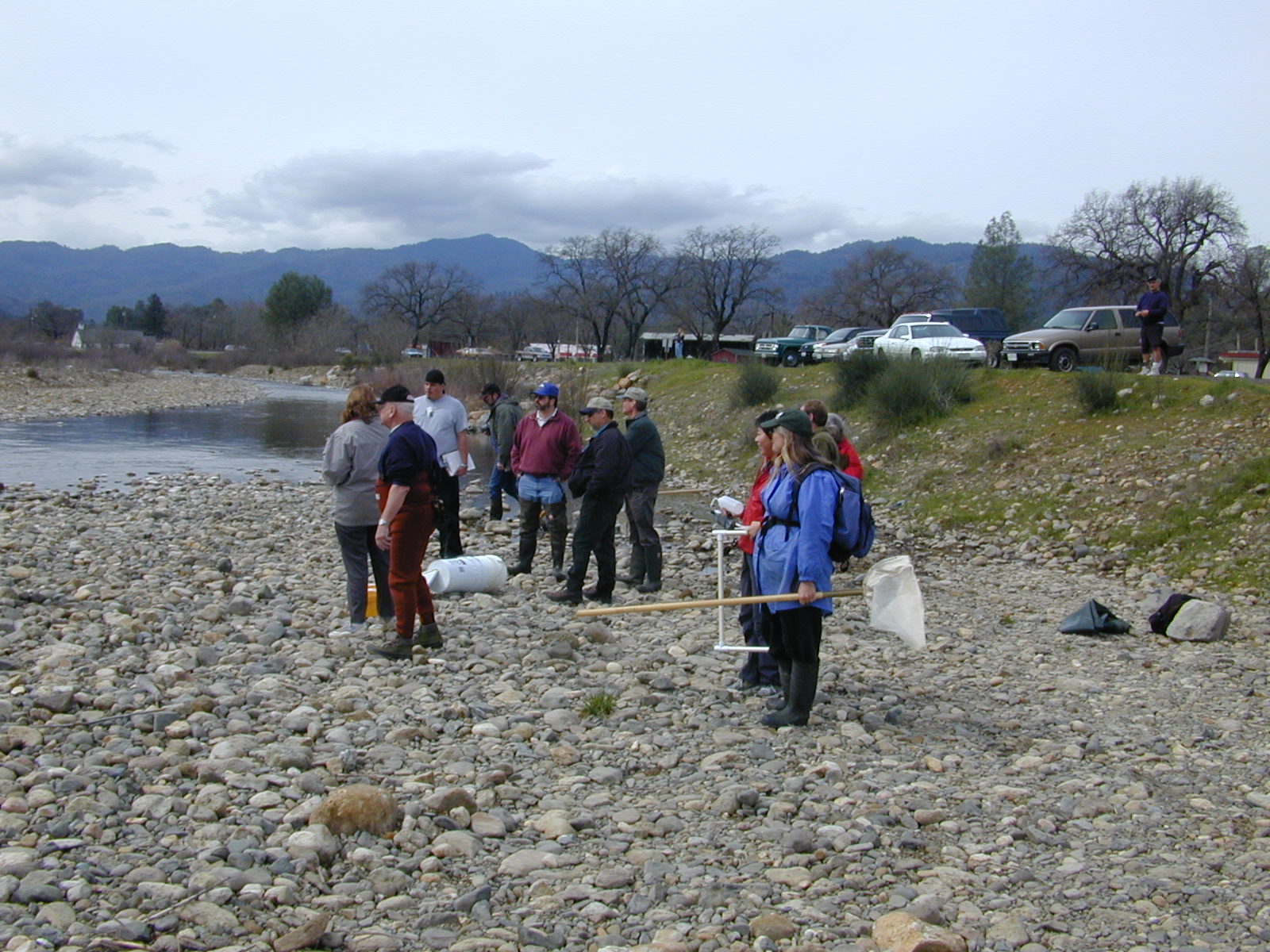
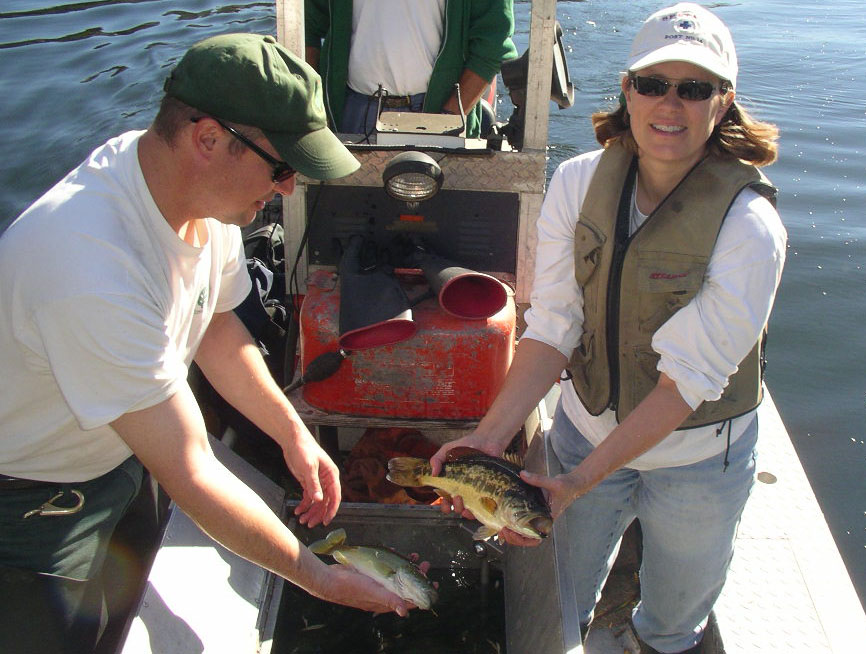
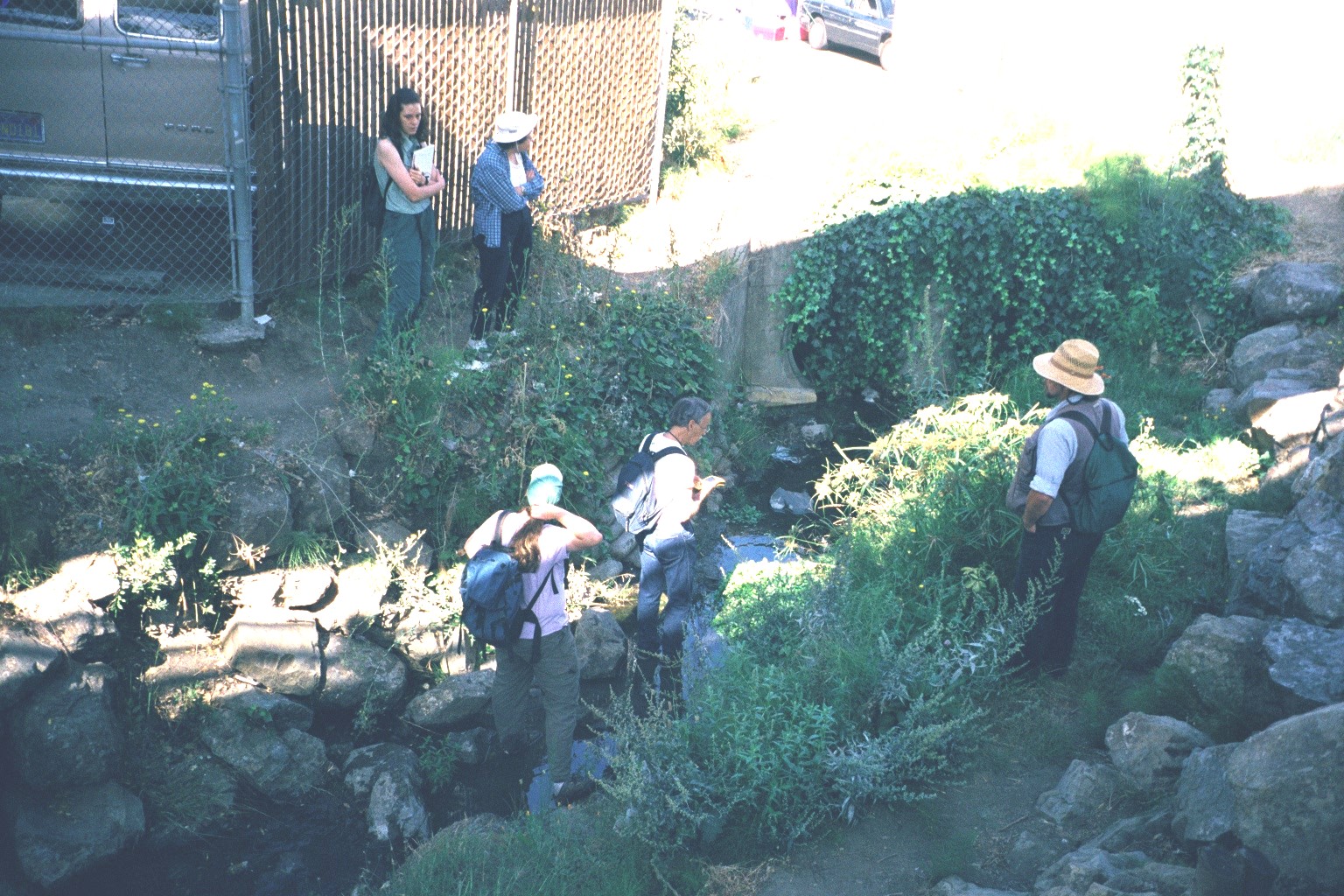
2010
Statewide Efforts
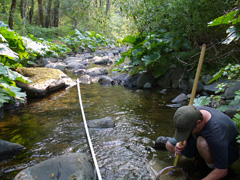
- Bioaccumulation Monitoring Program - Statewide Coastal Study
Continued 2-yr study to assess contaminants in sport fish along California's coast - Perennial Streams Assessment (PSA)/Bioassessment Monitoring Program
Continued statewide study to assess condition of perennial wadeable streams using bioassessment (Perennial Streams Assessment and Reference Condition Management Program) - Stream Pollution Trends (SPoT) Monitoring at Integrator Sites
Continued the statewide study to assess stream contamination by assessing sediment chemistry and toxicity at integrator sites
Regional Efforts
- Sacramento Watershed Coordinated Monitoring Program - Continued (Central Valley Region)
- Seasonal Trend Monitoring at Central Valley Integrator Sites (Central Valley Region)
- Safe to Swim Monitoring - Continued (Central Valley Region)
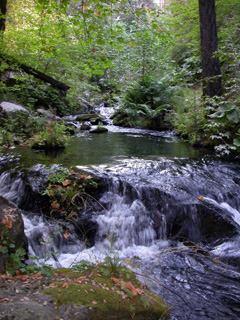
- Collaboration of the Stormwater Monitoring Coalition (SMC) and Perennial Streams Assessment (PSA) Programs in Southern California - Continued (Los Angeles, Santa Ana, and San Diego Regions)
- Los Angeles River Watershed Monitoring Program - Continued (Los Angeles Region)
Continued collaboration in the Los Angeles River Watershed Comprehensive Monitoring Program - San Gabriel River Regional Monitoring Program - Continued (Los Angeles Region)
- North Coast Regional Trend Monitoring Program (North Coast Region)
Continue Rotational Regional Trend Monitoring Program of the North Coast: Russian River watershed, Eel River watershed, Coastal River watersheds, and the Klamath and Trinity River Basins - Nutrient Study - South Fork Eel River (North Coast Region)
Nutrients Monitoring Program (North Coast Region) focuses on the association between nutrients and algal blooms along the south fork of the Eel River. - Garcia River TMDL Implementation and Bioassessment Monitoring - Continued (North Coast Region) Continued to support trend monitoring and ongoing bioassessment work in implementation of the Garcia River TMDL.
- Klamath Basin Monitoring Program - Continued (North Coast Region)
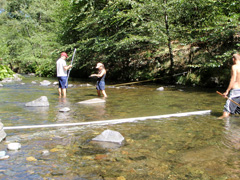
- Implementation of the Statewide SWAMP Algae Plan (Lahontan and San Diego Regions)
This plan outlines how the types and quantities of algae present in streams & rivers can be used as indicator of the stream health. - Effective Coordination of Monitoring and Assessment in the San Diego River Watershed (San Diego Region)
- Initiated study of Pharmaceuticals and Personal Care Products (San Diego Region)
- Monitoring Spring Phytoplankton Bloom Progression in Suisun Bay (San Francisco Bay Region)
Conducted a study documenting the relationship between nutrient concentrations
(including ammonium), and spring diatom blooms in Suisun Bay.
2009
- Initiated a study to assess contaminants in sport fish along California’s coast (Bioaccumulation Monitoring Program - Coastal Study)
- Initiated a statewide study to assess stream contamination by assessing toxicity at integrator sites (Statewide Stream Pollution Trend Monitoring at Integrator Sites)
- Continued statewide study to assess condition of perennial streams using bioassessment (Perennial Streams Assessment/Bioassessment Monitoring Program)
- Supported National Oceanic and Atmospheric Administration with mussel sampling for known and emerging contaminants (Mussel Watch Pilot Project on Emerging Contaminants)
- Supported the Klamath Basin Monitoring Program(Region 1)
- Supported trend monitoring and ongoing bioassessment work in implementation of the Garcia River TMDL (Region 1)
- Initiated formation of an integrated and coordinated watershed monitoring program in Alameda, Contra Costa, San Mateo, and Santa Clara Counties and the cities of Fairfield, Suisun City, and Vallejo (Bay Area Stormwater Permit Promoting Integrated Regional Monitoring) (Region 2)
- Completed the second of two 5-year watershed monitoring rotations in the Central Coast Region (Central Coast Ambient Monitoring Program) (Region 3)
- Initiated collaborative perennial streams monitoring program for Southern California (Region 4)
- Initiated Sacramento Watershed Coordinated Monitoring Program (Region 5)
- Initiated screening study to determine where bacteria are coming from in some Central Valley streams (Central Valley Bacteria Source Identification Screening Study) (Region 5)
- Continued collaboration in the Los Angeles River Watershed Comprehensive Monitoring Program (Region 4)
Questions or Comments?
- Please direct inquiries to the State Water Board, Surface Water Ambient Monitoring Program (SWAMP).
- State and Regional Board contacts listing: https://www.waterboards.ca.gov/water_issues/programs/swamp/swamp_contacts.html

